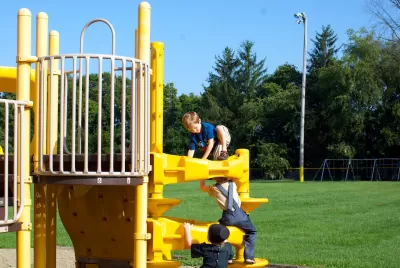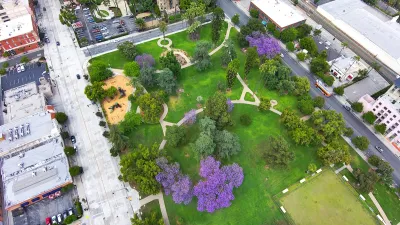Data analysis and research by national organizations are helping to ensure equitable distribution and provision of parks and recreational facilities.

The field of parks and recreation is increasingly becoming more data-driven, with data helping to inform planning, decision-making, and resource allocation. This article by Kurt Buss discusses how data analysis and research by three national organizations, including the National Recreation and Park Association (NRPA), the Trust for Public Land (TPL), and the National Association of Realtors (NAR), are being used to ensure and support the equitable distribution and provision of parks in communities across the country. Specifically, the following resources are highlighted:
- NRPA Park Metrics: This is the most comprehensive source of data standards and insights for park and recreation agencies. Launched in 2009, these agency performance resources assist park and recreation professionals in the effective management and planning of their operating resources and capital facilities. This suite of tools allows park and recreation agencies to build customized reports that allow for comparisons with peer agencies. Park and recreation professionals can use this benchmark data to gain more funding support, improve operations and better serve their communities.
- TPL ParkScore®: This index is the national gold-standard comparison of park systems across the 100 most-populated cities in the U.S. Along with these 100 cities, the data behind the index also reveals park access levels for nearly 14,000 cities, towns, and communities. To determine a city’s ParkScore rating, TPL assigns points for 14 measures across five categories: acreage, investment, amenities, access, and equity. For each of the 14 measures, points are awarded on a relative basis, based on how a city compares to the 100 largest U.S. cities.
- NAR Community Preferences Surveys: NAR has conducted community preferences surveys, in one form or another for 20 years, providing realtors and local communities with important information about changes and helping them advocate for smart growth strategies in response to those shifts. According to the 2020 Community Preference Survey, more than three fourths of all respondents want to be within an easy walk to a park and 53 percent believe it is important to be close to paths. Also, over half of them would be willing to pay more to buy a house within walking distance to amenities, such as parks.
For details, please read the source article.
FULL STORY: Equitable Park Planning, and the Role of Big Data

Alabama: Trump Terminates Settlements for Black Communities Harmed By Raw Sewage
Trump deemed the landmark civil rights agreement “illegal DEI and environmental justice policy.”

Planetizen Federal Action Tracker
A weekly monitor of how Trump’s orders and actions are impacting planners and planning in America.

How Atlanta Built 7,000 Housing Units in 3 Years
The city’s comprehensive, neighborhood-focused housing strategy focuses on identifying properties and land that can be repurposed for housing and encouraging development in underserved neighborhoods.

In Both Crashes and Crime, Public Transportation is Far Safer than Driving
Contrary to popular assumptions, public transportation has far lower crash and crime rates than automobile travel. For safer communities, improve and encourage transit travel.

Report: Zoning Reforms Should Complement Nashville’s Ambitious Transit Plan
Without reform, restrictive zoning codes will limit the impact of the city’s planned transit expansion and could exclude some of the residents who depend on transit the most.

Judge Orders Release of Frozen IRA, IIJA Funding
The decision is a victory for environmental groups who charged that freezing funds for critical infrastructure and disaster response programs caused “real and irreparable harm” to communities.
Urban Design for Planners 1: Software Tools
This six-course series explores essential urban design concepts using open source software and equips planners with the tools they need to participate fully in the urban design process.
Planning for Universal Design
Learn the tools for implementing Universal Design in planning regulations.
Jessamine County Fiscal Court
Caltrans
Institute for Housing and Urban Development Studies (IHS)
City of Grandview
Harvard GSD Executive Education
Toledo-Lucas County Plan Commissions
Salt Lake City
NYU Wagner Graduate School of Public Service





























